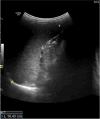Inborn errors of immunity presenting with lymphoproliferation: lessons from a case series
- PMID: 40553169
- PMCID: PMC12283836
- DOI: 10.1007/s00277-025-06456-1
Inborn errors of immunity presenting with lymphoproliferation: lessons from a case series
Abstract
Lymphoproliferation can represent the first or leading disease sign in different inborn errors of immunity (IEI), which include autoimmune lymphoproliferative syndrome (ALPS), common variable immunodeficiency (CVID), combined immunodeficiencies, activated phosphoinositide 3-kinase δ syndrome (APDS), Epstein-Barr (EBV)-related disorders, and others. The genetic and molecular background and the clinical implications of IEI presenting with lymphoproliferation are partly unexplored. Therefore, the diagnosis and clinical management of this category of patients is particularly challenging. As treatments targeting the specific genetic defect are available for some of the IEIs associated with lymphoproliferation, identifying the molecular diagnosis is of great clinical relevance and could significantly improve the patient's long-term outcome. To this purpose, a first-level immunological assessment is strongly recommended in patients with persistent or recurrent unexplained lymphoproliferation, and specific second-level analysis can orient towards the correct clinical suspicion. The mechanisms responsible for polyclonal, benign lymphoproliferation in IEI also cause an increased susceptibility to clonal, malignant lymphoproliferation. Therefore, a careful follow-up is recommended in all the patients with IEI and polyclonal lymphoproliferation, to promptly identify the development of clonality. Moreover, as malignant lymphoproliferation can be the first disease sign of some IEI, there is increasing interest in the possibility of recognizing IEIs in patients presenting with lymphoid malignancies. This work, by describing some relevant case studies, reviews the role of lymphoproliferative features in three of the most paradigmatic conditions, particularly ALPS, CVID, and APDS, and provides an updated discussion on the diagnosis, treatment, and follow-up of patients with IEI and lymphoproliferative features.
Keywords: Activated phosphoinositide 3-kinase δ syndrome; Autoimmune lymphoproliferative syndrome; Common variable immunodeficiency; Hodgkin lymphoma; Lymphadenopathy; Pediatrics; Splenomegaly.
© 2025. The Author(s).
Conflict of interest statement
Declarations. Ethics statement: The patient, or their parents in the case of minors, provided consent for the publication of the manuscript. Competing interests: The authors declare no competing interests.
Figures





References
-
- Seidel MG, Hauck F (2024) Multilayer concept of autoimmune mechanisms and manifestations in inborn errors of immunity: relevance for precision therapy. J Allergy Clin Immunol 153(3):615–628e4. 10.1016/j.jaci.2023.12.022 - PubMed
-
- Latour S, Fischer A (2019) Signaling pathways involved in the T-cell-mediated immunity against Epstein-Barr virus: lessons from genetic diseases. Immunol Rev 291(1):174–189. 10.1111/imr.12791 - PubMed
Publication types
MeSH terms
LinkOut - more resources
Full Text Sources
Research Materials

